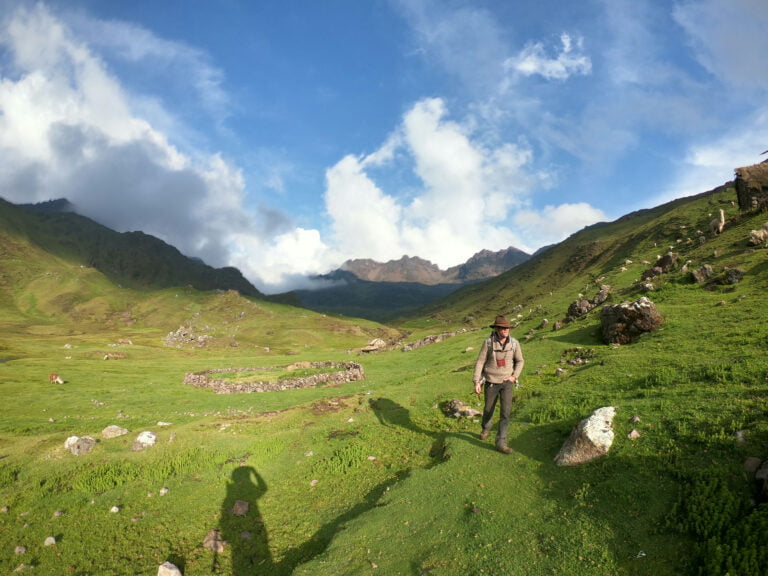San Pedro, The Wachuma Ceremony
The wachuma or also called the San Pedro plant is a blue-green cactus. This wonderful plant can grow up to approximately 7 meters in height. It has beautiful white bell-shaped flowers.
Thousands of years ago, wachuma was used by various civilizations within Peruvian territory. The Chavín culture was the pioneer in the use of this plant, its main objective being healing. It also had mystical uses for links or means that connected man with different dimensions of the spiritual world.

The wachuma ceremony is a ritual carried out by a shaman (Andean priest). Previously, the shaman prepares the concoction, accompanied by prayers and melodies sung with different instruments. All this so that it can arrive with the best wishes for people.
Generally, the ceremony takes place in a closed place, although it can also be done in open places. They are usually sacred places such as sacred mountains or ancient temples. The shaman will be in charge of starting the ceremony by asking permission from the spirit of the plant and invoking its guardian entities (spirit of the earth, mountains, snow-capped mountains, ancestors, etc.). Then it continues with chants, whistles and/or musical instruments that are intended to guide the process of the participants.
Due to the concentration of mescaline that the wachuma plant has, the body experiences a sensation of drowsiness similar to dizziness, but in a full state of consciousness. At the same time, wachuma can act as a purgative, inciting vomiting, although the latter does not necessarily happen in most cases.
The main objective of this ceremony is to seek the mental, emotional and physical balance of the participant. Clear the fears and traumas that the person experiences during their life, the same ones that lead to psychological and physical alterations. The person then enters a state of meditation and connection, a process during which they are forced to face their deepest fears and traumas with the intention of finding a resolution for them.
It is important to meet the Andean teachers who will lead us through this magical and spiritual experience. In the past they were specialized priests, prepared from a very young age to be able to carry out these rituals. Currently, they are people who receive several years of training during which they are properly instructed in the preparation of the plant for the brew. They must have knowledge of the procedures to follow during the ceremony process and how to act in case any difficulty arises with the participants.
Anyone can participate in this ritual. The needs are diverse and so are the possibilities, in this understanding people in search of vision, that is; people who do not have a clear objective about their purpose in this world, people who suffer from some physical discomfort as a result of emotional and/or psychological trauma, people with addiction problems and anyone who wants to have some type of experience of connection with themselves. .
The Andes are the perfect setting to take a break and connect with that spiritual being that lies within each one. This is a somewhat delicate topic. Here we share some tips to make your ceremony a memorable experience. Nowadays this ceremony is quite requested. Being used by people who lack the necessary preparation or worse, personal morality.
Another factor for this is open information on the Internet. In it, we have access to almost all the theoretical information about the plant and in many cases incorrect content.
There are also those people who did not complete their training. Added to this is the sale of the plant in its natural form, as well as powdered or processed.
In this sense, a way to identify serious people through virtual platforms who do not have the need to sell one of these ceremonies. Platforms that do not coercively and insistently insist on claiming to be descendants of lineages or belonging to groups.
Within the practice of the rites of this ancestral plant, humility prevails. If this principle is violated then it is not a viable option to take into account.

